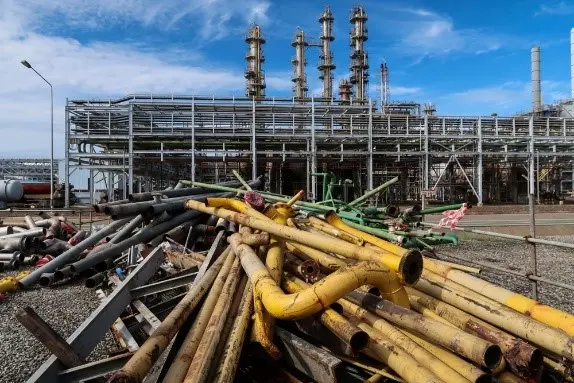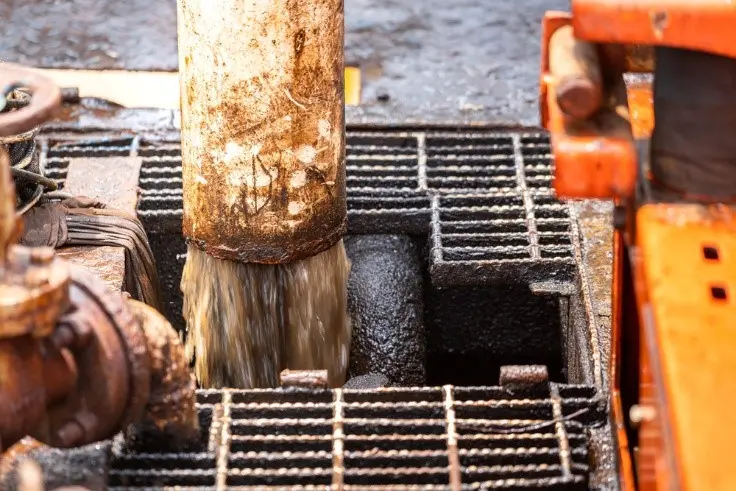Introduction
During each industrial plant shutdown, it is a requirement to establish and implement strategies and good practices for effective, responsible and sustainable environmental management. There must be control of the effects of plant shutdowns on the environment, where environmental regulations and clearly defined waste management are established and applied, which aim to avoid or minimize adverse impacts and improve positive environmental impacts for the future. .
In this context, we approach the issue from two perspectives: First, the negative effects that occur during the shutdown period and, on the other hand, the modifications, improvements and inclusion of technologies to make the processes more efficient, reduce the consumption of fossil energy and minimize greenhouse gas emissions.
What is meant by plant stops?
In the industrial setting, it is defined as a scheduled period in which production at a plant is stopped to perform essential maintenance activities. During this time, daily operations are suspended to focus on tasks such as cleaning, inspection and repair of equipment and systems, as well as the installation of clean technologies and implementation of process improvements that seek to optimize reliability, increase process efficiency , reduce fossil energy consumption and improve safety.
There are several types of plant shutdowns, among the main ones are emergency, partial and total shutdowns, which are the main ones and imply the complete cessation of operations; These present a prior planning, with a detailed list of tasks to be executed. Environmental considerations and what their impact is are also included in planning; in addition to waste management that presents strategies to reduce the carbon footprint and minimize the impact on ecosystems.
What is environmental impact?
It is defined as any change in the environment, whether adverse or beneficial, resulting from the activities, products or services of a facility or entity. In practical terms, it is the effect that human actions have on the environment, which can lead to the creation of an environmental imbalance.
The environmental impacts are varied, among the main ones are air, water and soil pollution, waste production and noise pollution, which cause damage to ecosystems and biodiversity.
Environmental impact of industrial plant shutdowns
Industrial processing plants must undergo periodic shutdowns to ensure a safe work environment and maintain a reliable and efficient level of production. But this action brings with it various factors that generate environmental pollution, among the main ones are:
Plant shutdowns involve the elimination of waste that includes replaced equipment and materials such as: Thermal insulation, refractories, pipes and metal structures that are discarded, reused, or go through a waste recycling process. The environmental impact of this waste is significant. Additionally, these wastes usually include hydrocarbons, paints, among other materials that increase environmental pollution.

To mention, fiberglass and mineral wool thermal insulation are difficult to recycle due to their fine fibers. When disposed of in landfills, they do not decompose easily, which contributes to the accumulation of solid waste, contaminating the ecosystem. Safe disposal is important to prevent the release of fibers into the air.
Another of the greatest environmental impacts is generated by muddy sediments, which are considered hazardous waste due to their content of hydrocarbons and other dangerous contaminants. Its handling, treatment and disposal must be carried out following regulations to prevent contamination of the environment. This includes processes such as oil and water separation, wastewater treatment, waste incineration or recycling to recover useful hydrocarbons.
Likewise, shutdowns often involve the use of chemicals for cleaning and maintaining equipment, which are spilled and can contaminate nearby water sources and soil if not handled correctly. These contaminated waters contain hydrocarbon residues that generate vapors and represent additional contamination risks, especially in the case of flammable substances.

Furthermore, during maintenance and repair activities, materials are used that generate pollution to ecosystems, and due to the magnitude of the work, they must be taken into account when evaluating the environmental impact of a plant shutdown; Examples are mentioned such as traditional epoxy paints and silica sand used for surface cleaning. Likewise, welding processes generate vapors and gases that contaminate the air, depending on the type of welding and the materials used.
Additionally, washing and draining are carried out prior to repairs or replacements on equipment, pipes or complete systems. These wastes contain residues of hydrocarbons, chemicals or flammable vapors that represent additional risks of environmental contamination.

Industrial plants, especially during start-up phases, emit greater pollution compared to their normal operations. This increases the release of particles and greenhouse gases, negatively affecting air quality, although this action is for a short period, it must be taken into account. Also, greenhouse gas emissions generated by the fleet, equipment and machinery used during the stoppage must be considered.
The shutdowns of industrial plants, although necessary for maintenance and safety, sometimes have a considerable environmental impact. However, good waste management, the adoption of technologies, and careful planning manage to minimize these impacts, improving operational sustainability and reducing environmental risks.
Industrial waste management
Efficient management of solid waste at industrial plant shutdowns is essential to reduce its environmental impact. The comprehensive management of this waste covers different stages, including generation, accumulation, storage, transportation, treatment and final disposal. Each phase requires specific strategies to minimize adverse effects on both the environment and human health.
Furthermore, the implementation of recycling strategies using clean technologies, adapted to different types of waste, is a basic component in mitigating environmental impact. These practices not only contribute to environmental conservation, but also offer economic advantages to companies by complying with environmental regulations.
Evaluation of the effects of plant shutdowns on the environment
It is a systematic process that identifies, evaluates and mitigates the environmental risks and impacts that are generated during the period of an industrial plant shutdown. This process involves several steps:
- Planning and programming: Includes the identification of tasks and activities that will be carried out during the stop. This is essential to foresee and mitigate possible impacts on the environment.
- Environmental risk assessment: A detailed analysis is carried out of the possible environmental impacts that arise during the shutdown, including the emission of pollutants, the generation of waste and the handling of hazardous materials.
- Mitigation measures: Strategies are developed to reduce or eliminate negative impacts on the environment. This may include the use of clean technologies, implementing better waste management practices and reducing emissions.
- Monitoring and auditing: During and after plant shutdown, continuous monitoring is carried out to ensure that mitigation measures are effective. With environmental audits, areas for improvement are identified.
- Reports and review: Detailed documentation of all activities and their environmental impacts is necessary. This includes preparing reports that are reviewed and used for future decision making.
- Post-shutdown monitoring: After the shutdown, the environmental impact continues to be monitored to ensure that there are no long-term adverse effects and that the measures implemented have been effective.
A positive factor left by plant shutdowns
Large industrial companies are taking advantage of scheduled shutdowns to include a series of advanced technologies in their operational processes. These include Carbon Capture and Storage Systems (CCS), reducing greenhouse gas emissions.
In addition, the combustion and boiler systems are optimized for greater efficiency in fuel use and waste heat recovery systems are implemented to take advantage of the lost heat. The electrification of equipment and processes, along with the use of alternative and low-emission fuels such as hydrogen or biofuels, are also implemented to reduce dependence on fossil fuels and direct emissions.
Plant shutdowns are an opportunity to move towards more sustainable, safe and efficient operations, taking advantage of technology and strategic planning.
Conclusion
During the execution of industrial plant shutdowns, it is necessary to measure, plan and minimize any activity that could alter the ecological balance and bring environmental effects. Waste management is a fundamental part of the strategies of any plant shutdown.
It is important to comply with the planned agreements that include the control of measures in favor of the environment; which is a challenge, since at each stop there are areas susceptible to multiple and unexpected risks that generate contamination. Currently, sustainable practices are promoted during shutdowns and clean technologies are installed to optimize energy efficiency, reduce fossil energy consumption and reduce the carbon footprint during operational processes.
References
Own source


